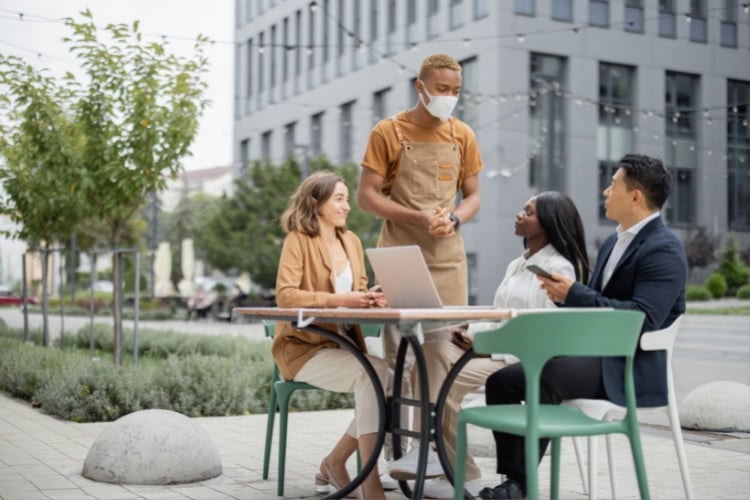Showing consideration for the perspectives, values, beliefs, behaviors, and communication styles of someone else is often referred to as cultural competence-and it is an important skill for the food industry to cultivate.1
Food moves us. We are able to go to places we would have never explored if it were not for food. Likewise, individuals from all over the world with backgrounds and cultures are visiting our foodservice spaces looking to create memorable food experiences in their daily lives.
It isn’t actually possible for anyone to accurately guess or make assumptions about the values behind people’s food habits, patterns, and practices – and we shouldn’t try. Operators, foodservice workers, and diners all may have variations in how they celebrate the holidays (and even what holidays they celebrate), weddings, births, and even loss.
Taking all this into account, Trust20 has three simple suggestions for increasing your cultural competency in a foodservice space. Here are three questions to ask yourself:
How do you react to the differences you see in others?
Where do my personal beliefs and biases enter in?
Where is there an opportunity to be more welcoming?
STEP 1 - Ask yourself: How do you react to the differences you see in others?
As noted in Diabetes Spectrum, “food and language are the cultural habits humans learn first and the ones they change with the greatest reluctance.”2 This means that the thoughts, feelings, and experiences we each hold dear are just as closely held by every person we interact with. Keeping this in mind when a diner or customer requests a specific modification to their order can help foodservice workers remain empathetic to the whole person in front of them.
Right Way: I think this dish is best served with bacon on it, but understand that some religions and personal values do not permit people to eat pork – and that’s okay.
Wrong Way: This dish is best served with bacon on it. If you can’t eat bacon, you shouldn’t order this dish.
STEP 2 - Ask yourself: Where do my personal beliefs and biases enter in?
It may sound counterintuitive, but self-awareness is key when it comes to understanding others. If you don’t have a clear picture of how your culture and experiences have influenced your life, how can you possibly understand why someone else holds a different set of beliefs? If you’re unsure where to start, The Community Tool Box has provided a great resource for becoming more aware of your own culture.3
Right Way: The way I was taught to prepare this dish is different from my sous chef - and we can learn from each other.
Wrong Way: The way I was taught to prepare this dish is the only way to do it. My sous chef is wrong and should get over it.
STEP 3 - Ask yourself: Where is there an opportunity to be more welcoming?
Creating a welcoming environment always comes down to the details. Greeting everyone you interact with with the same level of enthusiasm and respect, creating a separate menu for people with allergies, offering multilingual menus, and strategic space organization are all ways to expand the number of people who feel at ease in a space.
Right Way: I’ve had a hard time communicating with my table because English is their second language, so I’m going to read back their order again and double check that no one in their party has allergies.
Wrong Way: I’m really struggling to connect with this table, I guess I’m just going to get this order in so they leave faster.
These moments of self-reflection might seem to clash with the fast-paced nature of the foodservice industry, but they don’t have to. While much of the back of house foodservice work revolves around preparing and handling food safely, the experience of that same food is what brings customers back to a business on a regular basis. Cultural competency is just like any other skill in that it takes practice to make it a habit – and its well worth the effort.
Sources:
-
West Virginia Department of Health and Human Services: Cultural Sensitivity
-
Diabetes Spectrum: Using Cultural Competence Constructs to Understand Food Practices and Provide Diabetes Care and Education
-
Community Tool Box: Building Relationships with People from Different Cultures






.png)

.png)
